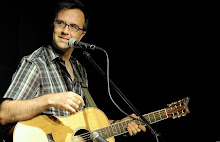I started playing when I was twelve, on a Yamaha FG-345 acoustic. I started out playing on my lap,
Jeff Healey
style, picking out songs from a book called
Pocket Beatles
, which helpfully showed chord frames with numbered fingerings for each simplified arrangement.
Milton Okun was the music editor and the book was published by Cherry Lane, as I recall. My first lessons, at a studio called Guitar Man in Burlington, Ontario, were with Steve Barker, a Robbie Robertson lookalike who also played banjo and got great tones out of a modified Fender Bullet. This was in early 1982. He disabused me of my lap-style approach and I started reading out of
Mel Bay, Book 1
. This book was anachronistic even then, with pictures of big ol' Mel playing his
D'Angelico archtop and such up-to-date tunes as "Sparkling Stella," which revealed itself on first run-through as "Twinkle Twinkle Little Star." But my assiduous practicing, aided by a rather quiet social calendar, soon convinced Steve that I was ready for more ambitious and school-hallway-jam-ready fare as "Sweet Home Alabama." I remember that my fingers would hurt so much from playing every day after school that I had to take a break the day before my lesson to recover.
I worked my way up through the ranks of teachers at Guitar Man for the next couple of years, through the talented Sandy, who played guitar only as a sideline to piano but had enough chops to lift and teach to me "Little Wing" (the
Hendrix in the West
version, which has always given me a nice variation in my approach to this oft-played rock standard) along with Led Zeppelin's "Black Dog" and "Over The Hills and Far Away." My next teacher, Mike Allan, introduced me to Travis picking through
"Blackbird" and
"Don't Think Twice, It's All Right."
I was a nascent classic rocker, shunning almost all of the current pop music of the day - Michael Jackson, Culture Club, Duran Duran - in favor of the cool, dead rockers of the past, especially Jimi Hendrix, Led Zeppelin, the Beatles, and the Doors. The Doors' "L.A. Woman" was the first guitar part that I ever lifted myself. I remember spending literally hours at the cassette player, rewinding over and over to pick out each note on the Yamaha acoustic.
I got a paper route to save up enough money to buy an electric guitar and amp. My eventual purchase, made at GB Sound in Burlington, was a Vantage Avenger. Black body and pickguard, maple fingerboard and a pointier version of a Stratocaster design. It was in a chipboard case and came with a cheap ten-foot cord. The amp was a Roland Spirit 10, which had built-in buzzy distortion. Both items, I must note, smelled terrific. I spent many hours coaxing Hendrix-like feedback and vibrato-bar howls out of that rig. My imagination was, at the same time, being fired by books like
No One Here Gets Out Alive
,
Scuse Me While I Kiss The Sky
and
Hammer Of The Gods
, which mythologized the 60s rockers and their seemingly magical hands.
One day my mother, in one of her coolest moves ever, unexpectedly presented me with Joe Pass's album
Virtuoso #2
, which was completely different from the records that I was listening to at every spare moment, and featured some of the best guitar playing I had ever heard. It was a solo jazz guitar record, with Joe playing beautiful fingerstyle chord melody on standards and some more modern tunes, like Chick Corea's "Five Hundred Miles High." I brought that tune to my guitar teacher, Mike, and this led to my final teacher promotion at Guitar Man, to the guitar man himself, Carter Lancaster.











No comments:
Post a Comment